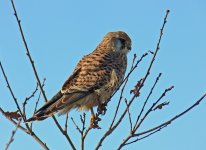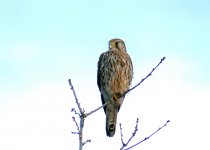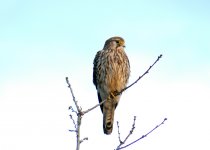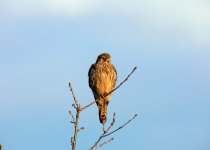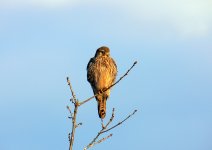Upland Birder
Birding On The Edge
It is cold and icy here at Whitemore Haye in Staffordshire, the sunlight is bright and I am alone on the flood plain around the confluence of the rivers Trent and Tame, a regular haunt for swans, geese and ducks in winter. Wild Whooper and Bewick’s Swans who have migrated here from their breeding grounds have been present in recent weeks but are not showing for me today. A pair of faithful Mute Swans feed together on a snow clad field.
There is something special about Whitemore Haye with its abundance of birds, the constant bird activity about me and the feeling that I am trespassing on their habitat, a place of relative peace and stillness somehow separate from urban existence and human activity found not to far away.
Wintering flocks of Lapwing, Carrion Crow, Rooks and Wood Pigeon in their hundreds frequent the flat open arable fields occasionally spooked and taking to the air in spectacular fashion. Golden Plover have been seen but not by me on this February day.
A lone female Kestrel is perched looking out across the field.
The hedgerows, trees and edges of fields are frequented by Tree Sparrows, Yellowhammers, Chaffinches, Dunnock, Robin, Reed and Corn Buntings. A small flock of Magpies occupy one area while a large number of Starlings are perched high in a tree chattering excitedly amongst themselves about what I have no idea. A solitary Green Sandpiper and Redshank feed together on the edge of frozen standing water. Mallards frequent a deep watery ditch joined by a lone Heron. Close by Fieldfare and Redwing add to the winter scene.
Whitemore Haye is an oasis for birds and mammals ideal for hunting raptors and owls. Being a predator and being predated on is always the order of the day here. The unlucky ones will be taken from this world.
There is bird activity at every turn and I have come here to watch a lone female Kestrel hunting, to watch it at close quarters and to photograph it perched in its territory. I have no idea if I will get the photograph I am looking for but as the day advances and the minutes pass by I will learn the outcome.
The winter conditions of recent days have been tough with heavy snow fall and freezing temperatures the main theme. Perhaps some birds have perished not strong enough to have survived such extremes of weather. Others that have survived thus far are under pressure from day to day waiting for a glimpse of spring, and a sign of warmth to return to their habitat, their world, their home. For some birds this will be their first winter here. For others the breeding season is just a few months away and territories are being established, relationships formed.
There is no sign of the Little Owl that is often present at the same lone tree in the field nearby. Perhaps it was hiding or sheltering from the cold. Staying indoors seems to be a good idea I pondered.
Hidden from view I observe a bird of the open countryside, a second female Kestrel at close quarters searching for prey, gliding rapidly and effortlessly nearby on the edge of an open field with hedgerow running alongside it, sometimes hanging on the wing in the chill breeze, and occasionally down it would go disappearing from view. This is a solitary female bird surviving in harsh winter conditions and plummeting temperatures in its territory, a territory also shared by others.
The Kestrels hunting skills learned from its parents has enabled it to survive but the reality is that many young Kestrels do not make it through their first winter. This individual is a survivor of how many winters I do not know.
Yellowhammers, Greenfinch, Tree Sparrows, Chaffinch, Robins, Dunnock and Corn Buntings are moving in groups or pairs around me in the name of safety in numbers whilst the Kestrel hovers or perches in its quest for food. Perhaps it hoped to take a bird by surprise in the open landscape not an easy task for this desperately hungry Kestrel
I sit patiently watching every move of this wonderful bird of prey going about its daily business hovering with head into the chill breeze. Occasionally it perched on the hedgerow looking out on the ground that lay below.
In flight the Kestrel constantly varied its height while hunting, searching at one height and dropping when possible prey was located and back up to height when the opportunity to feed was not forthcoming. It persistently worked the same area of field and hedgerow repeating this behaviour over and over again. I thought to myself that this bird is perhaps spending its whole life in this small area of Whitemore Haye and when I am in bed this evening it will still be here surviving another night of low temperature; the next day when I am up and the sun rises from the east it will be out there once again looking for prey in its shared territory.
A Heron in flight joins a second Heron to stand motionless in a field opposite. I hear the call of a Buzzard. It takes flight only to be mobbed by Crows as it leaves their territory. Gulls overhead are making their way to their evening roost.
The sun is lowering in the sky and I am now feeling the cold as it penetrates my inner self. My camera is at the ready. In close proximity the Kestrel hovers, pounces, cruses, soars and finally perches before me. I am excited but manage to contain myself and keep focused. Slowly I lift my camera into position not wishing to disturb or spook the very creature I had come to visit. My mission for the day was drawing to a close and with a series of photographs taken I slowly placed my camera down beside me.
The life of this female Kestrel intrigues me and I know we shall meet again soon during the coming months and seasons with me as the audience, the Kestrel a wild bird of prey in its natural world.
Finally the Kestrel took flight once more and with the temperature dropping and the sun setting in the west beyond Whitemore Haye I headed home to the warmth of my very own roost.
There is something special about Whitemore Haye with its abundance of birds, the constant bird activity about me and the feeling that I am trespassing on their habitat, a place of relative peace and stillness somehow separate from urban existence and human activity found not to far away.
Wintering flocks of Lapwing, Carrion Crow, Rooks and Wood Pigeon in their hundreds frequent the flat open arable fields occasionally spooked and taking to the air in spectacular fashion. Golden Plover have been seen but not by me on this February day.
A lone female Kestrel is perched looking out across the field.
The hedgerows, trees and edges of fields are frequented by Tree Sparrows, Yellowhammers, Chaffinches, Dunnock, Robin, Reed and Corn Buntings. A small flock of Magpies occupy one area while a large number of Starlings are perched high in a tree chattering excitedly amongst themselves about what I have no idea. A solitary Green Sandpiper and Redshank feed together on the edge of frozen standing water. Mallards frequent a deep watery ditch joined by a lone Heron. Close by Fieldfare and Redwing add to the winter scene.
Whitemore Haye is an oasis for birds and mammals ideal for hunting raptors and owls. Being a predator and being predated on is always the order of the day here. The unlucky ones will be taken from this world.
There is bird activity at every turn and I have come here to watch a lone female Kestrel hunting, to watch it at close quarters and to photograph it perched in its territory. I have no idea if I will get the photograph I am looking for but as the day advances and the minutes pass by I will learn the outcome.
The winter conditions of recent days have been tough with heavy snow fall and freezing temperatures the main theme. Perhaps some birds have perished not strong enough to have survived such extremes of weather. Others that have survived thus far are under pressure from day to day waiting for a glimpse of spring, and a sign of warmth to return to their habitat, their world, their home. For some birds this will be their first winter here. For others the breeding season is just a few months away and territories are being established, relationships formed.
There is no sign of the Little Owl that is often present at the same lone tree in the field nearby. Perhaps it was hiding or sheltering from the cold. Staying indoors seems to be a good idea I pondered.
Hidden from view I observe a bird of the open countryside, a second female Kestrel at close quarters searching for prey, gliding rapidly and effortlessly nearby on the edge of an open field with hedgerow running alongside it, sometimes hanging on the wing in the chill breeze, and occasionally down it would go disappearing from view. This is a solitary female bird surviving in harsh winter conditions and plummeting temperatures in its territory, a territory also shared by others.
The Kestrels hunting skills learned from its parents has enabled it to survive but the reality is that many young Kestrels do not make it through their first winter. This individual is a survivor of how many winters I do not know.
Yellowhammers, Greenfinch, Tree Sparrows, Chaffinch, Robins, Dunnock and Corn Buntings are moving in groups or pairs around me in the name of safety in numbers whilst the Kestrel hovers or perches in its quest for food. Perhaps it hoped to take a bird by surprise in the open landscape not an easy task for this desperately hungry Kestrel
I sit patiently watching every move of this wonderful bird of prey going about its daily business hovering with head into the chill breeze. Occasionally it perched on the hedgerow looking out on the ground that lay below.
In flight the Kestrel constantly varied its height while hunting, searching at one height and dropping when possible prey was located and back up to height when the opportunity to feed was not forthcoming. It persistently worked the same area of field and hedgerow repeating this behaviour over and over again. I thought to myself that this bird is perhaps spending its whole life in this small area of Whitemore Haye and when I am in bed this evening it will still be here surviving another night of low temperature; the next day when I am up and the sun rises from the east it will be out there once again looking for prey in its shared territory.
A Heron in flight joins a second Heron to stand motionless in a field opposite. I hear the call of a Buzzard. It takes flight only to be mobbed by Crows as it leaves their territory. Gulls overhead are making their way to their evening roost.
The sun is lowering in the sky and I am now feeling the cold as it penetrates my inner self. My camera is at the ready. In close proximity the Kestrel hovers, pounces, cruses, soars and finally perches before me. I am excited but manage to contain myself and keep focused. Slowly I lift my camera into position not wishing to disturb or spook the very creature I had come to visit. My mission for the day was drawing to a close and with a series of photographs taken I slowly placed my camera down beside me.
The life of this female Kestrel intrigues me and I know we shall meet again soon during the coming months and seasons with me as the audience, the Kestrel a wild bird of prey in its natural world.
Finally the Kestrel took flight once more and with the temperature dropping and the sun setting in the west beyond Whitemore Haye I headed home to the warmth of my very own roost.
Attachments
Last edited:




